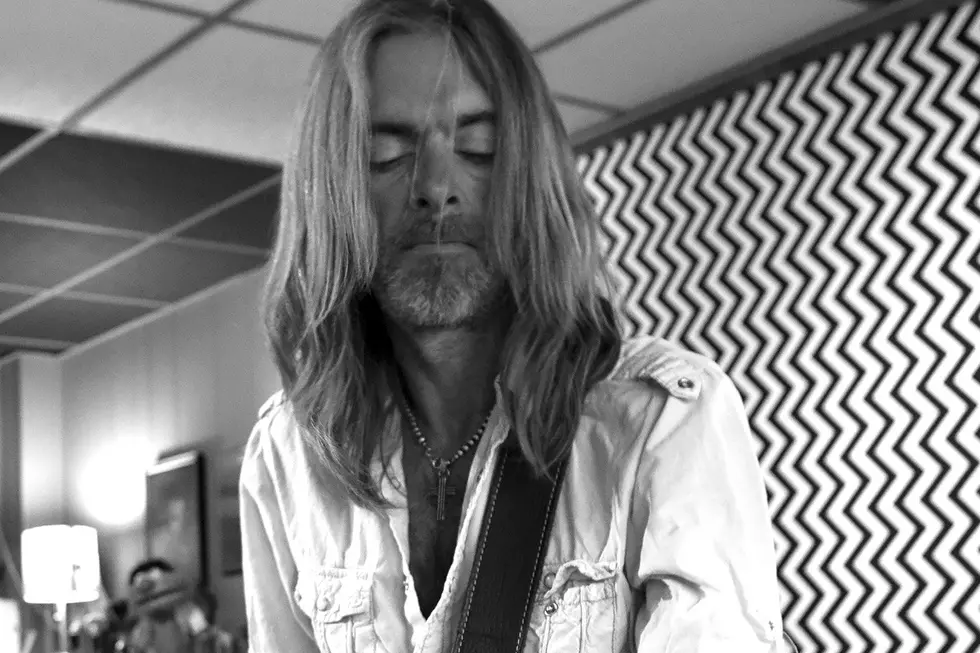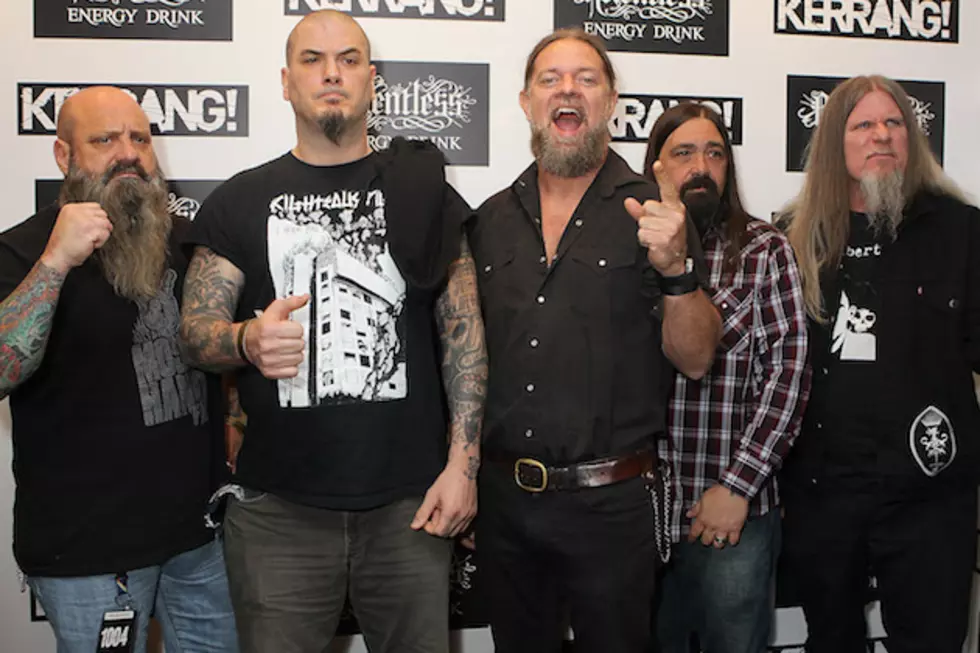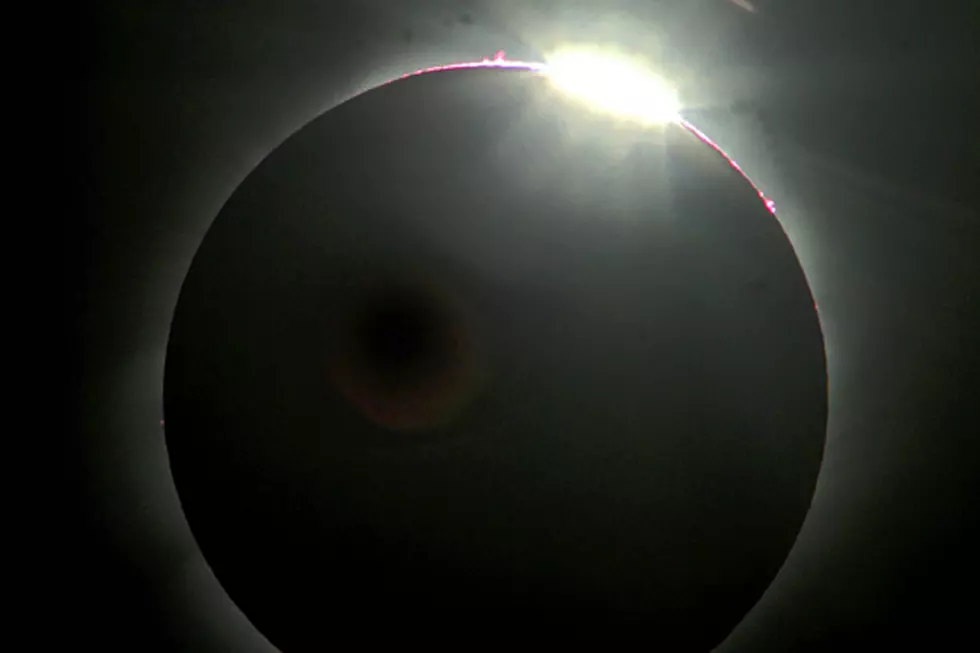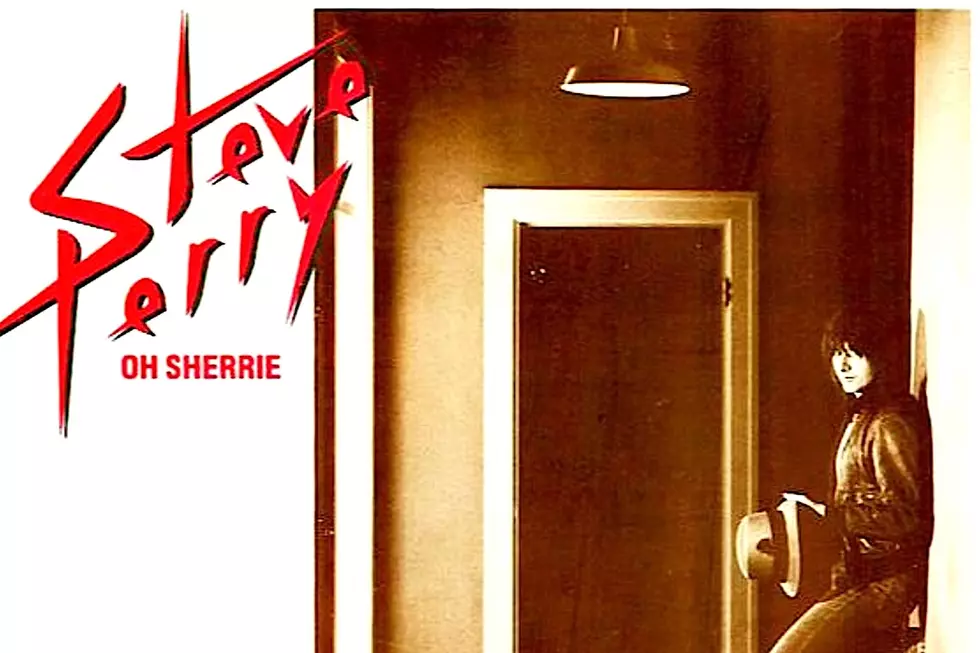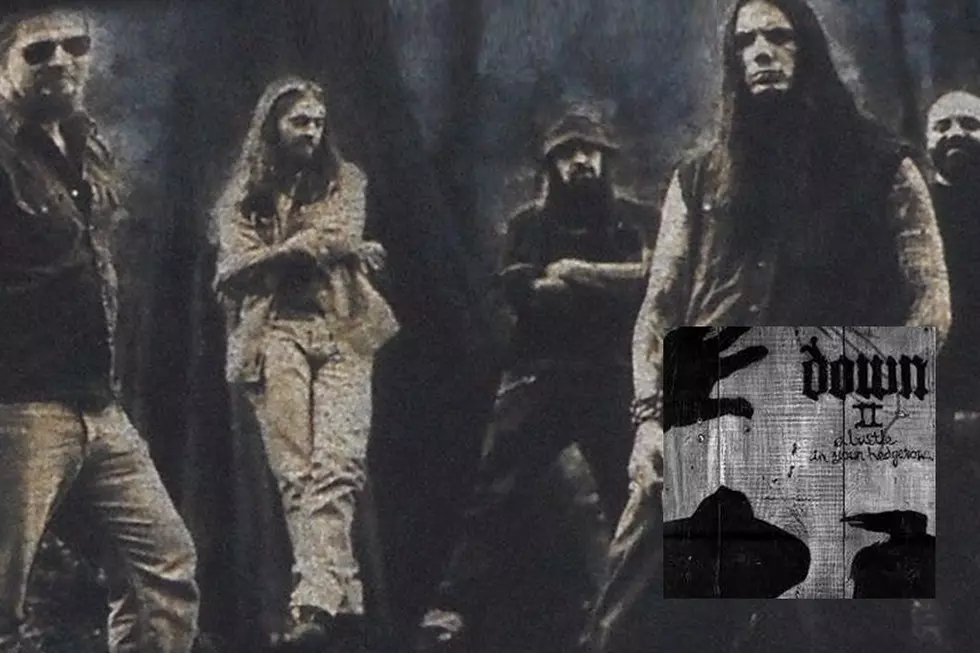
How Down Expanded Their Sound With ‘A Bustle in Your Hedgerow’
Wholly unprepared for the reception their 1995 debut NOLA would receive from metal fans, Down wasn’t able to fully capitalize on the success of the record, undertaking only a brief tour of the States before its members had to return to their respective primary outfits; Pantera, Crowbar, Corrosion of Conformity and Eyehategod. When the supergroup released a follow-up seven years later, on March 26, 2002, things turned out quite differently on a number of levels.
The seeds of Down II: A Bustle in Your Hedgerow were sown four years earlier, in 1998, when bassist Rex Brown went to New Orleans to visit his then-Pantera bandmate, singer Philip Anselmo. Recalling the period of time in his book Official Truth 101 Proof: The Inside Story of Pantera, Brown was initially planning on getting out of his home state of Texas for a “boy’s weekend.”
“It turned into something completely different,” he said, adding that Anselmo had originally asked him to come write some songs, but that when he arrived, guitarists Kirk Windstein and Pepper Keenan and drummer Jimmy Bower were also in attendance. “I was still unaware I was being auditioned to be the Down bass player.”
Brown replaced Crowbar’s Todd Strange, and brought a new dynamic to the group with musical leanings that came from a different place than the rest of the musicians - who had their roots embed in the heaviness and boogie-woogie of the Gulf Coast. The result was an album withless immediacy and more diveristy than NOLA, which for the most part was filled with razor sharp guitar riffs and grooves steeped in a tasty cocktail of early Black Sabbath and stoner rock.
“I’m from Texas and I’ve known those other New Orleans guys for as long as I’ve known Philip,” Brown said. “And when we get in the same room together, we just sit there and put all our individual influences and all our tastes together and see what comes out at the end.”
Down II was a more languid affair, with a sense of the songs having been recorded and then dragged through the swamps of New Orleans to add a veneer of sludge to them. There’s little doubt the substances being ingested contributed to the often foggy tint to the proceedings. As Anselmo explained to Revolver, each of the bandmates was christened with a nickname reflecting their indulgence of choice of the time. The singer himself was bestowed the moniker “Nodferatu,” as he had reacquainted himself with heroin.
“I would come out of my house and I’d look like Dracula,” Anselmo recalled. “I’d get to the jam room and done whatever I’d done, and I’d be like, [makes snore noises], nod out, you know?”
The entirety of the recording sessions took place within 28 days toward the end of 2001, though the reality was work on the album began three years prior. Keenan wrote for the snapshot text bio on advance copies that Down had isolated themselves in a barn in South Louisiana, “with enough booze, food, and "miscellaneous" items for no one to crawl out until it was done.” In fact, the guitarist revealed in 2000 that 10 songs were already finished.
Fifteen compositions eventually made the cut, with the thick and chunky urgency of thudding rockers “Ghosts of the Mississippi,” “The Seed” and “New Orleans Is a Dying Whore” fitting in nicely with the more airy “Learn from This Mistake” and “Beautifully Depressed.” Anselmo even channeled his inner Dr. John (a fellow Big Easy native) on the track “Stained Glass Cross," further varying the theme. The Sabbath influences were still intact, although this time coming from more expansive, late Ozzy-era albums such as Sabotage.
Led Zeppelin's influence also loomed large over the sessions, as Anselmo told MTV while explaining why the group borrowed a line from "Stairway to Heaven" for the album's title.
"I don't know why, but the session just had this Led Zeppelin vibe the whole time. And there's not a moment on the record where you can say, 'Ah, that sounds like Led Zeppelin,'” Anselmo said. "It just felt like we were doing something classic. It was the attitude of when Zeppelin made Zeppelin IV or the feeling of what was on Black Sabbath's mind when they were doing Sabotage. That kind of magic that hung over us like a shroud." (Actually, there's a touch of Led Zeppelin III in the largely acoustic "Landing on the Mountains of Meggido.")
Down II didn’t garner nearly the same amount of critical praise as NOLA when it landed on shelves, but was so well-received by fans – entering the Billboard charts at No. 44 – that organizers of Ozzfest requested the band join the touring festival that summer on the second stage.
“The record blew up when it came out," Brown said. “It was just one of those things. It hit a nerve in the metal community and if people want to come see you live, you’d be crazy not to go out there and make the best of it, so you can see how the Down thing just grew and grew."
Top 50 Classic Heavy Metal Albums
More From Ultimate Classic Rock

